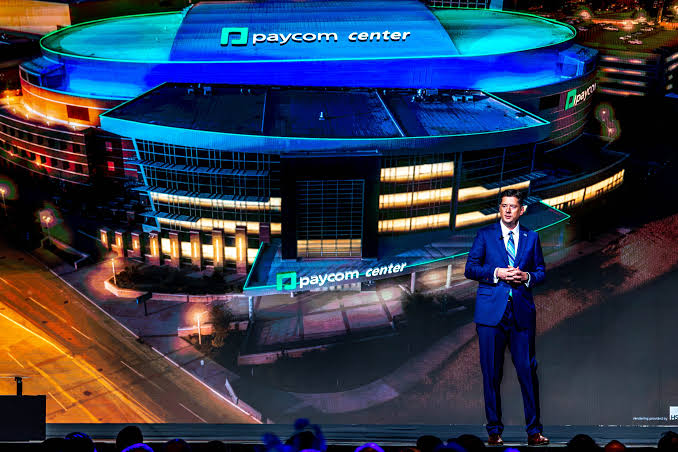BREAKING NEWS: Oklahoma City Thunder Unveil $1.3 Billion Renovation to Paycom Center Stadium, Redefining the Future of College Basketball
In a bold and unprecedented move, the Oklahoma City Thunder have announced a transformative $1.3 billion renovation to their home arena, the Paycom Center. The ambitious project, which aims to redefine the sports and entertainment experience in Oklahoma, is not only a game-changer for the NBA franchise but also poised to make a significant impact on the future of college basketball.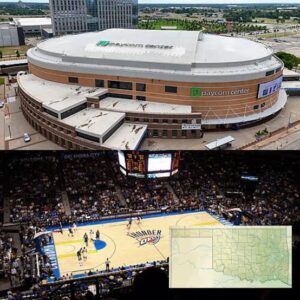
The announcement came early Tuesday morning at a press conference attended by Thunder executives, city officials, and local university representatives. Team Chairman Clay Bennett described the investment as “a once-in-a-generation opportunity to cement Oklahoma City as a national hub for sports, culture, and innovation.”
A Vision for the Future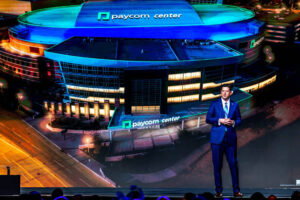
According to preliminary renderings and project details, the renovation will be a complete overhaul of the current Paycom Center. The plans include a state-of-the-art training facility, luxury hospitality suites, high-tech fan engagement zones, and expanded seating to accommodate up to 23,000 fans. What truly sets this project apart, however, is its dual-purpose design: the new Paycom Center will become a premier venue for major college basketball events, including NCAA tournament games, conference championships, and top-tier non-conference matchups.
This dual functionality is a groundbreaking step toward merging professional and collegiate sports in a shared environment. “We’re not just building an arena—we’re building a community epicenter where NBA excitement meets the passion of college basketball,” said Bennett.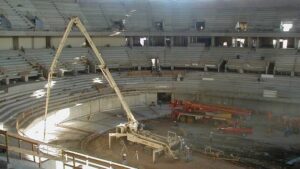
Economic and Cultural Impact
City leaders are heralding the investment as a major economic catalyst. Oklahoma City Mayor David Holt emphasized the project’s potential to create thousands of construction jobs, boost tourism, and invigorate the downtown district. “This project will drive hundreds of millions in economic activity,” Holt said. “It will keep us competitive with the top markets in the country while honoring our unique cultural identity.”
The arena’s integration into the surrounding community is another point of focus. Plans include a new public plaza, expanded transit access, and partnerships with local universities such as the University of Oklahoma and Oklahoma State University to host events, training camps, and outreach programs.
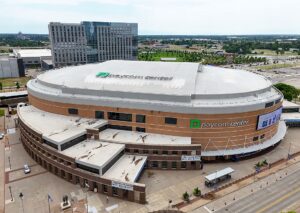
A New Era for College Basketball
The implications for college basketball are immense. The NCAA has long sought to expand its regional influence and provide more high-profile venues for its tournaments. The revamped Paycom Center, with its advanced infrastructure and central location, is positioned to become a key player in future March Madness bids.
Moreover, the Thunder organization plans to offer scheduling and logistical support to local college programs, giving them access to NBA-caliber facilities and promotional platforms. “Imagine Bedlam basketball games or Big 12 tournaments in a venue that rivals the top arenas in the country,” said OU Athletics Director Joe Castiglione. “This changes everything.”
Next Steps and Timeline
The project is expected to break ground in early 2026, with phased construction that allows the Thunder to continue playing in the arena throughout the process. Full completion is projected for 2030. The city has pledged financial support, including a public-private funding model and potential naming rights extensions.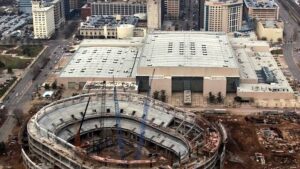
Fan response has been overwhelmingly positive, with early feedback praising the investment in local sports and entertainment. Season ticket holders will be offered virtual tours of the proposed upgrades, and a digital feedback platform is being launched to incorporate community input.
Conclusion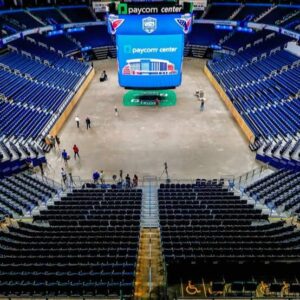
The $1.3 billion Paycom Center renovation is more than an arena upgrade—it’s a visionary investment in Oklahoma City’s future. By blending NBA prestige with college basketball’s fervor, the Thunder are not just redefining their home court—they are reshaping the sporting landscape of the entire region. With this bold move, Oklahoma City sends a clear message: the future of basketball runs through the heartland.
